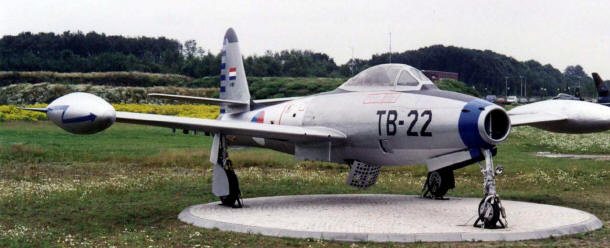|
|
| Republic F-84
Thunderjet, Thunderstreak
|
|
 |
The
F-84 was the USAF's first post-war fighter. It made its initial flight on February 26,
1946, and began rolling off the production lines in June 1947, and by the time
production ceased in 1953, approximately 4,450
"straight-wing" F-84s (in contrast to the swept-wing
F-84F) had been built. In addition to being used by the
USAF, many were supplied to allied nations participating in the
Mutual Security Program. During its service life, the F-84
became the first USAF jet fighter able to carry a tactical
atomic weapon. The airplane gained its greatest renown during the Korean
Conflict where it was used primarily for low-level
interdiction missions. Almost daily the F-84 attacked enemy
railroads, bridges, supply depots and troop concentrations with
bombs, rockets and napalm.
F84F Thunderstreak was the swept wing
version of the straight wing F84. The prototype first flew on June 3, 1950 and
deliveries began in 1954, primarily to the tactical Air Command
as a ground support fighter bomber. Republic built 2,112
of the swept-wing models and General Motors
fabricated another 599. Many of them, 1,301 to be exact, were delivered to
NATO air forces. Production of a reconnaissance version, the RF-84F,
totaled 715 aircraft, including 386 for allied countries. The
RF-84F featured engine air intakes at the wing roots plus
cameras in the nose.
The F-84Fs gradually were replaced by supersonic F-100s in the
late 1950s and were turned over to Air National Guard units.
However, some F-84Fs were called back to temporary USAF service
in the early 1960s due to the Berlin Crisis.
|
|
|
|
